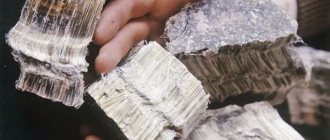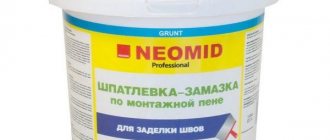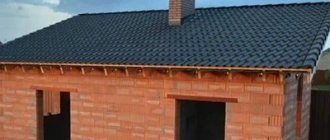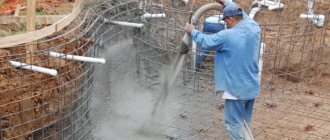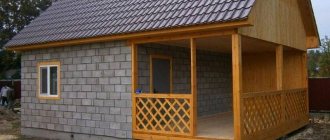Author: Anton Potashev
Asbestos building materials are widely used in domestic renovation programs, housing and public buildings. The customer often chooses the mineral because products based on it have the “NG” (non-flammable) status. But is asbestos harmful to health when heated?
Photo: One of the most common forms of using asbestos products is the construction of fireplaces, stoves and baths.
What is asbestos?
Asbestos (“mountain flax”) is the commercial name for a group of fibrous minerals from the silicate class. In nature, this mineral is found in the form of the finest fibers, several times thinner than a human hair. “Mountain flax” has received wide industrial distribution due to its high performance properties. For example, chrysotile asbestos becomes brittle when heated to 1500⁰C, which is comparable to the melting point of some grades of steel, but it never catches fire. Also, chrysotile fiber has a tensile strength of up to 300 MPa, is a dielectric, has low thermal conductivity and resistance to mechanical stress.
Where is it used
If you study the question of what asbestos is needed for, you will notice that it is used in various fields, including industrial production and construction.
Construction
Unsplash
In installation work, its fire resistance and thermal insulation are especially valued. Therefore, very often when installing wall panels or laying floors, asbestos boards or wool made from the same substance are used.
Mechanical engineering and metallurgy
Cables and various metal and concrete structures are usually treated with this mineral in the form of spraying. This is how they acquire fire-resistant properties.
In addition, in some houses, cement pipes with the addition of this substance are installed. It is thanks to him that they become stronger and more durable.
Chemical industry
Asbestos has also found application in the chemical field, where it is used to make various plastics, paper and paint and varnish products.
Textile industry
Here this mineral is used in the manufacture of fabrics for workwear. It is used to make protective gloves, helmets and suits. In addition, brake flanges and pipe seals are also made with its addition.
- Construction Materials
7 harmful building materials that should not be in your home
What materials are asbestos used in?
More than 300 types of industrial materials are made from asbestos. Among them are slate, fiber cement facade slabs, pipes, brake pad linings, fire-resistant fabrics, special-purpose uniforms, thermal insulation materials, filters for the chemical and food industries, etc. Typically, mineral fiber is used in conjunction with some material. Thus, in slate, asbestos fibers are bound with cement, which reduces their natural volatility. Once in the cement matrix, the mineral particles, on the one hand, become “bound”, and on the other hand, they themselves strengthen the structure of the new material.
Opponents' arguments
A number of scientists argue that the danger of asbestos-cement slate is too exaggerated. In fact, they believe, there is no need to abandon the roofing material that has been proven for decades. It is simply necessary to protect workshop workers by providing them with personal protective equipment. The same applies to roofers who have to cut slate sheets, and home craftsmen who independently install a roof or erect a fence from asbestos concrete sheets.
An indirect argument in favor of a “harmful” roofing material can be considered the fact that modern types of asbestos-free slate also include reinforcing fibers:
- polyethylene;
- cellulose;
- polypropylene;
- carbon, etc.
Their potential safety for humans has not yet been fully studied. Perhaps too little time has passed to announce final results and conclusions. Although it is likely that there is also a commercial component in this issue, which affects the increase in the rating of new roofing materials. But be that as it may, some experts are sure that it is still too early to talk about 100% environmental purity of modern slate.
Often, those who prove the danger of asbestos cement for the health of others make a statement about the weathering of harmful particles from the surface of roofing sheets. But opponents believe that this is not true, since chrysotile and cement are in strong adhesion. And if no one deliberately scratches the asbestos-cement fibers out of the slate, then they will not be able to fall out on their own.
In general, opponents' arguments are based on the assertion that only asbestos dust that appears during the cutting or mechanical destruction of slate sheets is harmful. But if they are simply lying in the yard or on the roof, then there can be no talk of any danger. According to the assurances of defenders of such a popular roofing material, the fuss about slate was raised only in order to promote non-asbestos analogues on the market.
01/23/2017 at 16:01
ASBESTOS, asbestos ores (from the Greek asbestos - inextinguishable, indestructible * a. asbestos, asbestus, earth flax, mountain flax; n. Asbest; f. asbeste, aminate; i. asbesto), - a group of fibrous minerals that have the ability to split into the finest flexible fibers. According to their chemical composition, asbestos minerals belong to the class of hydrous silicates of magnesium, iron, partly calcium and sodium. Based on mineralogy, characteristics and crystal structure, they are divided into chrysotile-asbestos and amphibole-asbestos.
Scope of application today
In Russia, asbestos is widely used for the manufacture of building materials. These are roofing materials, facade slabs, pipes, flat sheets, thermal insulation, etc. It is used for major repairs of residential buildings, construction of new residential areas and public institutions, and is used in the housing and communal services sector. Asbestos materials are used in the repair and construction of water supply systems, sewerage systems, garbage chutes in high-rise buildings, and in private construction - for thermal insulation of stoves, fireplaces and baths. In addition, from “mountain flax” they make:
- Napalm protection system "Soda" for T-72, T-80 and T-90 tanks
- Thermal insulation for boilers on nuclear icebreakers
- Fire extinguishing fabric (asbestos felt)
- Used in the space industry
Photo: One of the most recognizable asbestos products in Russia is fiber cement facade slabs.
Does asbestos affect the human body? Myths and truth
In the modern media space, one can often find statements indicating the harm that asbestos to human health. These theses are often based on myths that have been circulating around one of the most popular materials for more than half a century. Some of them have real grounds, but the general direction of negative rhetoric still has little in common with reality.
Asbestos is credited with many harmful properties - it is accused of causing serious illnesses, polluting the environment, etc. However, the use of this mineral is still not prohibited, despite active pressure from EU countries around the world. In Russia, asbestos is recommended to be used when heating surfaces as a thermal insulation material by official departments, for example, the Ministry of Emergency Situations. Every autumn, rescuers conduct special raids calling on the population to take care of their safety by using the right building materials. This begs the question: is asbestos when heated?
Harm to human health from the use of asbestos
Is asbestos dangerous to human health? The history of industrial use of the mineral exceeds 100 years. Over the years, a wide range of scientific studies have been prepared that prove that different types of “mountain flax” have different effects on human health.
Chrysotile asbestos is not harmful to humans - it is eliminated from the body in a few hours, completely dissolving in the acidic environment inside macrophages. It is this form of the mineral that is mined in Russia and it is chrysotile fiber that is permitted for use in Russia, including for the creation of passive fire protection and non-combustible materials.
How dangerous is asbestos to humans when heated?
When heated, mountain flax does not emit steam, does not burn or melt. If the heating is exceeded 1500⁰C (this temperature is found only in blast furnaces), then the chrysotile fiber becomes brittle, but does not ignite. Moreover, due to low thermal conductivity, say, an asbestos gasket does not transfer thermal energy to combustible structural elements.
When heated, asbestos cannot harm human health; on the contrary, it is its protector. It’s not for nothing that some of the volcanologists’ spacesuits were made using asbestos.
Photo: Asbestos fiber does not burn. When heated, it remains inert to thermal influences.
Where else is asbestos found?
This mineral is still present in outdated car models, some residential buildings, and old country houses. For many summer residents, asbestos in the bathhouse is a source of particular harm to health. After all, back in Soviet times it was used as a fire-resistant material for various coatings.
Asbestos does not burn, but when exposed to high temperatures it begins to break down, releasing harmful amphibole. Not all owners of country cottages are aware that they are exposing themselves and their household members to mortal danger.
Which asbestos is the most harmful?
However, the rhetoric about the dangers of asbestos did not arise out of nowhere. There are two types of asbestos - chrysotile and amphibole. The first, already mentioned in the text, is approved for use in industry. But the second one is prohibited.
Amphibole asbestos differs from chrysotile asbestos by the presence of iron in its composition. This makes it acid resistant and extremely tough. Under a microscope you can see that the fibers of the amphibole mineral look like needles. When amphibole asbestos enters the human body, it is harmful because macrophages cannot dissolve it in their acidic environment.
Previously, at the beginning and especially in the middle of the 20th century, both types of asbestos were used in industry, without restrictions and without attempts to track the effects on the health of workers. Many products were produced from amphiboles, but safety precautions were not followed in production. When they found out about this, amphibole asbestos was banned throughout the world - but the residue from the information storm, which did not distinguish between chrysotile and amphiboles, remained.
Chrysotile asbestos – what is it and is it harmful to health?
How to avoid harmful effects on humans
In the modern world, the harmful effects of asbestos on humans are impossible, since neither the worker nor the consumer comes into contact with its dangerous variety (amphiboles). Chrysotile asbestos is safe for the health of industry workers and consumers if basic standards are observed. The factories use a system of controlled use of asbestos, which includes installations for filtering indoor air, supplying personnel with personal respiratory protection equipment and special uniforms, as well as special rules for packaging and transporting asbestos fiber. It is worth noting that such a set of safety measures is mandatory for any dusty industries (coal, wood, cement and others).
For the consumer, chrysotile products are safe, since the mineral fiber is in a bound state, losing its natural volatility. De facto, it turns into ordinary dust. Of course, as, for example, when cutting slate, you should protect your respiratory system from fine dust - but the same can be said about working with wood.
Photo: The photo shows an employee of one of the asbestos mining plants in Russia. His clothing is more than enough to ensure safe contact with the mineral.
Lungs' cancer
Lung cancer causes the largest number of deaths associated with asbestos exposure. The incidence of lung cancer in people who are directly involved in the mining, grinding, production and use of asbestos and its products is much higher than in the general population. The most common symptoms of lung cancer are coughing and changes in breathing. Other symptoms include shortness of breath, persistent chest pain, hoarseness and anemia.
People who have been exposed to asbestos and also exposed to another carcinogen, such as cigarette smoke, have a significantly greater risk of developing lung cancer than people exposed to asbestos alone. One study found that smokers who work with asbestos are about 90 times more likely to develop lung cancer than those who do not smoke and are not exposed to asbestos.
Analogues and substitutes of material
There are no full-fledged functional analogues for chrysotile asbestos products. The combination of absolute non-flammability, low thermal conductivity, resistance to mechanical damage, combined with low cost, gives a unique set of properties. However, there are synthetic analogues of chrysotile products that can be compared with fiber in certain parameters. They are usually more expensive to produce and are also not safe for human health. Thus, when working with glass wool, an analogue of asbestos in the field of thermal insulation, it is necessary to use personal respiratory protection and a special uniform that will protect the worker’s skin.
To summarize, we can say this. In modern times, asbestos does not cause harm to health when heated, as with other types of use. The opinion about the negative impact of “mountain flax” is an echo of the information storm from the last century, which does not reflect the real state of affairs. Asbestos, which is harmful to health, was banned decades ago. In addition, it was not used for civilian purposes in Russia and Eastern European countries.
Mesothelioma
Mesothelioma is a rare form of cancer that most often occurs in the lining of the lungs, some tissues of the chest, abdomen, and (rarely) the heart.
Almost all cases of mesothelioma are associated with exposure to asbestos. Approximately 2 percent of all miners and textile workers who work with asbestos, and 10 percent of all workers who were involved in the production of asbestos-containing gas masks, suffer from mesothelioma.
Asbestos is not just inhalable dust, which is also harmful. People who work in asbestos mines, asbestos mills and factories, and shipyards that use asbestos, as well as people who manufacture and install asbestos insulation, have an increased risk of developing mesothelioma.
People who live with asbestos workers, near asbestos mining areas, near factories that manufacture asbestos products, or near shipyards where asbestos use has created large quantities of airborne asbestos fibers have the same risk.
Evidence suggests that cancers of the esophagus, larynx, mouth, stomach, colon and kidneys may be caused by ingesting asbestos.
